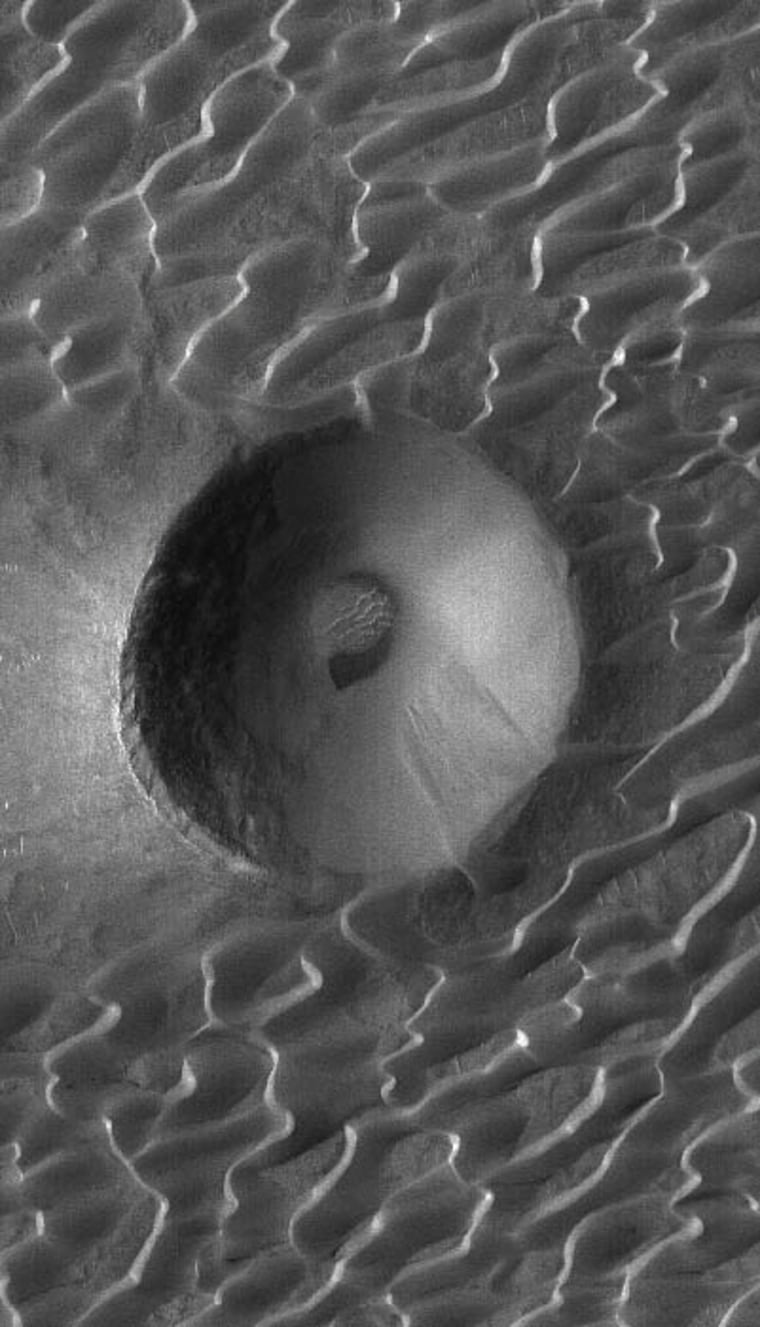The sand dunes of Mars are in no rush to move across the Red Planet's surface, new research shows.
It can take up to 1,000 years for dunes to move just a few meters on Mars, largely due to the planet's apparent lack of moving surface water, weak winds and thin atmosphere, said the study's author, Eric Parteli.
"Mars dunes move much slower than Earth's dunes," Parteli, a researcher at the University of Stuttgart in Germany, said in an e-mail interview.
Parteli and colleague Hans Hermann, of Brazil's Federal University of Ceará, used computer simulations to reproduce actual Martian dunes observed by the Mars Orbiter Camera aboard NASA's Mars Global Surveyor spacecraft. The images were taken before Mars Global Surveyor went silent last year, ending its 10-year study of the Red Planet's surface.
The scientists found that a small Martian sand dune about 3 feet (1 meter) tall would need wind speeds of 75 mph (120 kilometers per hour) to move appreciably.
Since such winds are extremely rare on the Red Planet, occurring just a few times each decade, the dunes of Mars are confined to their glacial pace, the researchers said. The research is detailed in the recent edition of the journal Physical Review E.
The limiting factor, Parteli said, is the Martian atmosphere.
On Earth, sand dunes are shaped by water and wind. But extensive scans of Mars by NASA's Spirit and Opportunity rovers and orbiting spacecraft have yet to find liquid water on the Red Planet's surface.
Dunes on Mars can reach heights of 20 feet (6 meters) and come in shapes ranging from crescents to stars, though similar sand dune formations are seen on Earth. The difference, Parteli said, is that Mars tends to span more crescent-shaped (barchan) and transverse dunes, while the long, sinewy linear dunes are more common on Earth.
And while Martian winds can kick up sky-blotting dust storms like those that plagued the Spirit and Opportunity rovers this summer, the atmosphere of Mars is 100 times less dense than that of Earth. The result, researchers said, is weaker winds that only rarely reach strengths capable of moving Martian dunes.
"If sand-moving winds on Mars occurred as frequently as they occur on Earth, Mars dunes would move 10 times faster than Earth's dunes," Parteli told Space.com.
According to the simulations, winds strong enough to create bimodal dunes — sand structures shaped by winds blowing in perpendicular directions — could take about 50,000 years to complete their work.
"Of course, there are many winds on Mars which change direction in a scale of hours," Parteli said. "But they're just not strong enough to move sand."
